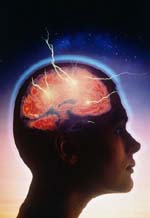 In an earlier post on the topic of seasonal affective disorder (SAD), a reader emphasized the importance of recognizing the influence of the circadian pacemaker on depression, and its importance when scheduling light treatment.
In an earlier post on the topic of seasonal affective disorder (SAD), a reader emphasized the importance of recognizing the influence of the circadian pacemaker on depression, and its importance when scheduling light treatment.
So, let’s update the record.
In a 1998 study, Dr. Alfred Lewy at the Sleep and Mood Disorders Laboratory at Oregon Health Sciences University in Portland concluded, “that bright-light exposure be scheduled immediately on awakening in the treatment of most patients with seasonal affective disorder.”
The study assessed 51 people — each receiving bright light at 6 to 8 AM for 2 weeks or at 7 to 9 PM for 2 weeks in random order.
Morning light was more antidepressant than evening light. These findings helped establish the importance of circadian (morning or evening) time of light exposure in the treatment of winter depression.
For anyone interested in more information about SAD and circadian patterns, a scholarly review is here, and a more practical overview is here.
Before embarking on a course of light treatment, it is recommended to be evaluated by a physician. Sometimes a medical illness or another psychiatric condition masquerades as depression.
Illustration: National Organization for Seasonal Affective Disorder (NOSAD)
4/12/07 19:38 JR